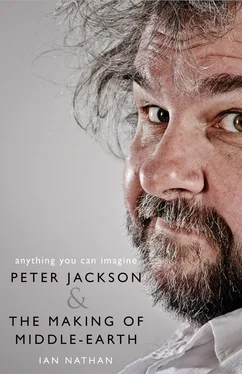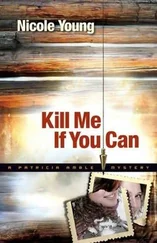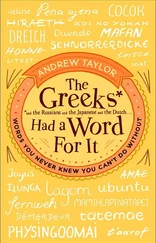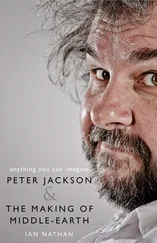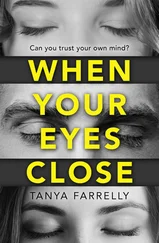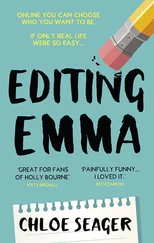Figurative tickertape was raining down on Wellington; it was the stuff of dreams with the city’s favourite son capturing it all on his video camera. He knew he would never remember it all, it would pass in a blur.
They had made it to the Moon and back again in filmmaking terms. The Return of the King , a fantasy epic, that laughably unsophisticated genre, would soon pick up eleven Oscar nominations. This was the culminating chapter in a staggering, and staggeringly successful, adaptation of J.R.R. Tolkien’s The Lord of the Rings , considered for so long as impossible to capture on film.
Helen Clark, New Zealand’s prime minister, the day’s host, would give her thanks for all the films had brought to this country. Not only Hollywood dollars and employment — when the accounting was done the films would have utilised the talents of 23,000 Kiwis — but the tourism boom his trilogy of marvels had launched. With the help of a different world Jackson had put New Zealand onto the map.
How proud his country was of him, she said. How much she hoped his success would continue on into the future.
Jackson too would address the crowd, giving his thanks and saying how humble he felt that so many of them would turn out. He wasn’t even an All Black.
Everyone would give speeches. Each roared on by the crowd. It was like a wedding or a coronation, with 2,500 specially invited guests. Only this time Viggo Mortensen wasn’t expected to sing.
*
Earlier that day, amid the bustle of party business, with various planners and executives clamouring into walky-talkies and lumpen Nokias, Jackson had dutifully arrived on time at his allotted meeting point. Then, he hadn’t had to travel far. His home in Seatoun was barely ten minutes away, twenty if you caught Wellington at rush hour when the tailbacks can stretch to as many as ten cars long.
Seatoun lies on the seaward side of the quiet Wellington suburb of the Miramar Peninsula that plays home to Jackson’s filmmaking empire — studio, offices, post-production facilities, Weta Workshop, Weta Digital. Hollywood visitors still had trouble seeing past the corrugated iron roofs, brick warehouses, and general disrepair of the former paint factory on Stone Street. Outwardly, barring the immediate beauty of the landscape, everything here seemed so … Well, so unlikely .
How unlikely too that, in all their planning, no one had thought what to do with their director, the man who had made all this happen, while the final arrangements for the premiere were being made. So it was that Jackson had been guided to a perfectly nice hotel suite to wait in a celebrity holding pattern while the more rigorous demands of readying film stars for a public appearance took place elsewhere.
The memory still strikes Jackson as strange. ‘I thought, well, that sounds nice. I thought there would be the actors, but it was just me, and they shut the door. And I was sitting in this hotel room for at least an hour and a half. I was lying there thinking, this is pretty weird. Why aren’t we having a drink down in the bar?’
He was as nervous as anyone would be about to speak in front of hundreds of thousands of people. A drink, a laugh, simply passing the time with someone would have helped.
What might have struck him as strangest of all, however, was that he had been left to his own devices. As long as he stayed put. New Line’s army of wedding planners weren’t going to let their prize catch wriggle free. They virtually put him under lock and key. Gandalf imprisoned on the roof of Orthanc.
Only hours before, with the eleventh hour disappearing in the rear-view mirror, had he completed his adaptation of The Lord of the Rings trilogy. With a running time of three hours twenty-one minutes, long even by his own extended standards — and even then he knew that fans would bemoan the loss of lovely sequences that wouldn’t be retrieved until the Extended Edition a year from now — The Return of the King was ready for its heroic debut. For the first time in five years, maybe longer, Jackson didn’t need to worry about his films.
There was no need to approve any fresh artwork from the peerless and tireless pencils of John Howe or Alan Lee; or clear an effects shot, a music cue, a sound edit, a costume alteration, a set that had sprung up overnight, a mooted location or schedule, a poster design, or indeed head to the edit suite, because when all else was done he always needed to head to the edit. No actors would need to call upon his wisdom; no lighting set-up or shot trajectory was open for discussion. No stunt team needed marshalling. No new script pages needed to be wrestled into submission; as he no longer needed to fine-tune the sometimes-cumbersome complexities of Tolkien’s world toward the dynamic world of cinema — to choose this path or that, often depending on which one smelled the better. Even those public relations folk, who had called upon him to speak to the press when he could least afford the time, were now busy elsewhere.
The constant background noise inherent in this awesome undertaking had finally been silenced — all he could hear was the crowd a few blocks away, cheering even the carpet sweepers.
Jackson was left alone with his thoughts.
He turned on the television and found a telemovie, whatever was playing. He can’t remember what it was about let alone what it was called; he doubts it was any good.
Lying there on the bed, some cheesy, low-budget melodrama in the background, his mind must surely have wandered back through the forest of days, the miraculous events and unaccountable toil that had brought him here to this moment of triumph and farewell.
CHAPTER 1 Contents Cover Title Page Copyright Dedication Epigraph Foreword by Andy Serkis Prologue: Journey's End 1: Sillification 2: An Unexpected Director 3: Many Meetings 4: Words and Pictures 5: Concerning Hobbits 6: Heavenly Creatures 7: Jamboree 8: Miramar’s Mecca of Merry Souls 9: Proof of Concept 10: The Monsters and the Critics 11: To the Edge of the World 12: Junkie 13: MASSIVE 14: Return to the Edge of the World 15: The Music of Middle-earth 16: King of a Golden Hall 17: Legacy of the Ring 18: There and Back Again 19: Augmented Reality Afterword Picture Section Footnotes Bibliography Index Acknowledgements Picture Credits About the Author Also by Ian Nathan About the Publisher
Sillification Contents Cover Title Page Copyright Dedication Epigraph Foreword by Andy Serkis Prologue: Journey's End 1: Sillification 2: An Unexpected Director 3: Many Meetings 4: Words and Pictures 5: Concerning Hobbits 6: Heavenly Creatures 7: Jamboree 8: Miramar’s Mecca of Merry Souls 9: Proof of Concept 10: The Monsters and the Critics 11: To the Edge of the World 12: Junkie 13: MASSIVE 14: Return to the Edge of the World 15: The Music of Middle-earth 16: King of a Golden Hall 17: Legacy of the Ring 18: There and Back Again 19: Augmented Reality Afterword Picture Section Footnotes Bibliography Index Acknowledgements Picture Credits About the Author Also by Ian Nathan About the Publisher
In June 1958, John Ronald Reuel Tolkien put pen to paper. Without letting his scrupulous English manners slip, he still made his feelings quite clear. The story, he claimed, swelling in his indignation as the letter wound on, had been ‘murdered’.
The year before, three American producers sounding not unlike a law firm from a film noir movie — Forrest J. Ackerman, Morton Grady Zimmerman and Al Brodax — had approached Tolkien’s publishers, Allen & Unwin, proposing a feature film of The Lord of the Rings . Having decried the ‘sillification achieved’ by the BBC in a 1955, twelve-part radio serial based upon his epic, written and produced by the poet Terrence Tiller (a close friend of Tolkien admirer W.H. Auden) — since lost to the mists of BBC deletion — he couldn’t see that dealing with a film version would be any less painful.
Читать дальше
